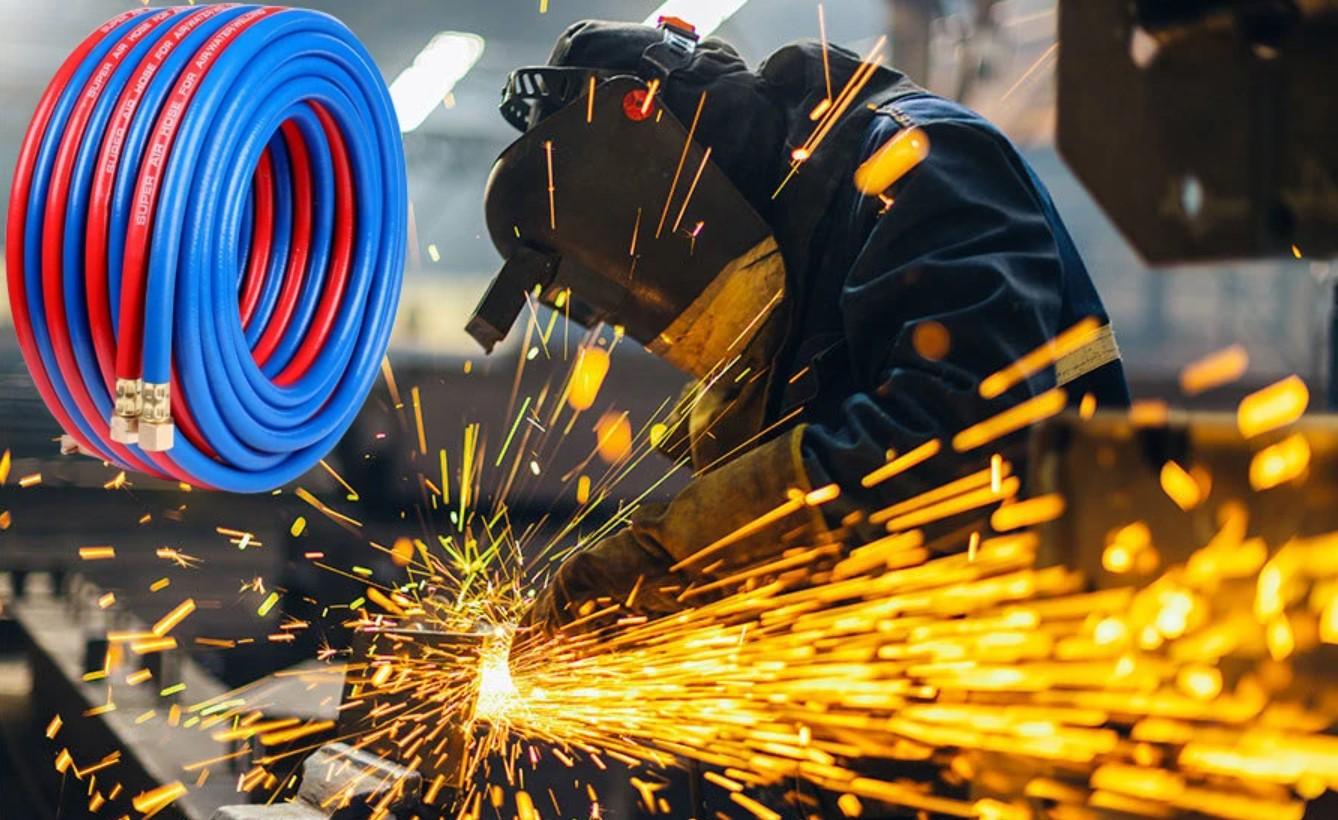Welding is a critical process used in various industries, from manufacturing to construction. It involves joining metal components together using extreme heat. However, welding cannot be accomplished without the essential tool - welding hoses. These hoses play a pivotal role in supplying gases, like acetylene and oxygen, or feeding welding wire, enabling welders to perform their craft effectively. In this article, we'll delve into the world of explore how top-notch welding hose manufacturers are empowering a new generation of welders.
Evolution of Welding Hoses
Welding has come a long way since its inception. In the early days, welders faced several challenges, including limited mobility due to rigid hose materials. However, with advancements in technology, welding hoses were developed, revolutionizing the welding landscape. Modern hoses are designed with high-quality materials, ensuring flexibility, durability, and improved performance.
Understanding Welding Hoses
Welding hoses consist of various components, including the inner tube, reinforcement, cover, and fittings. Each component contributes to the overall functionality and safety of the hose. Different types of welding hoses cater to specific welding processes, such as oxy-acetylene welding, MIG welding, and TIG welding. It is crucial for welders to understand these variations to make informed choices for their projects. Additionally, adherence to industry standards is vital for ensuring optimal safety and efficiency.
The Significance of Quality Welding Hoses
The quality of welding hoses significantly impacts the outcome of welding projects and the safety of welders. Inferior hoses may result in gas leaks, compromising the integrity of welds and posing severe hazards. Welders must invest in high-quality hoses suitable for their applications to achieve precise and robust welds. Moreover, avoiding counterfeit or substandard hoses is essential to maintain a safe working environment.
Leading Welding Hose Manufacturers
Several companies have made remarkable contributions to the welding industry through their top-of-the-line welding hoses. Company A, for instance, has been at the forefront of innovations, introducing cutting-edge hose designs that enhance performance and durability. Company B is known for its unwavering commitment to safety, providing hoses that meet the strictest industry standards. Company C stands out with its sustainable practices and certifications, appealing to eco-conscious welders.
Welding Hose Maintenance and Safety
Proper maintenance of welding hoses is crucial for their longevity and optimal performance. Regular inspection, leak detection, and preventive maintenance can prevent potential issues and ensure smooth welding operations. Additionally, storing and handling hoses correctly minimizes wear and tear. Welders must also follow safety guidelines, such as using hose check valves, to mitigate potential hazards.
Advantages of Premium Welding Hoses
Investing in premium welding hoses offers numerous advantages. These hoses boast enhanced flexibility, allowing welders to maneuver comfortably in tight spaces. The use of high-quality materials ensures durability, reducing the need for frequent replacements. Furthermore, premium hoses contribute to improved welding efficiency and precision, leading to higher productivity.
Empowering a New Generation of Welders
The welding industry continues to evolve, and fostering the next generation of welders is essential for its growth. Manufacturers are actively involved in providing training and skill development programs, equipping aspiring welders with the knowledge and expertise needed to excel in their careers. Furthermore, promoting diversity in the welding field ensures fresh perspectives and ideas, leading to further innovations.
Applications of Welding Hoses
Welding hoses find application in various industries. In the automotive and aerospace sectors, these hoses are critical for fabricating and repairing metal components. In construction and infrastructure projects, welding hoses are indispensable for joining heavy metal structures securely. Additionally, hobbyist welders and artists use welding hoses to bring their creative visions to life.
Future Trends in Welding Hose Manufacturing
As technology advances, so does the welding industry. Manufacturers are exploring the integration of smart technology into welding hoses, enabling real-time monitoring of gas flow and hose conditions. Furthermore, there is a growing emphasis on using environmentally-friendly materials, making welding hoses more sustainable. Additionally, customization options for end-users are being developed, catering to specific welding needs.
Conclusion
Welding hoses are the lifelines of welding operations, enabling welders to create robust and precise connections between metal components. As technology continues to evolve, welding hose manufacturers play a crucial role in empowering a new generation of welders. By producing high-quality, durable, and efficient hoses, these manufacturers drive innovation and safety in the welding industry.
FAQs
- What is the average lifespan of a welding hose?
- The lifespan of a welding hose depends on various factors, such as usage frequency, maintenance, and quality. With proper care, a high-quality welding hose can last for several years.
- Can welding hoses be repaired if damaged?
- In some cases, minor damages to welding hoses can be repaired. However, it is essential to assess the extent of damage and seek professional advice for safety reasons.
- Are there welding hoses suitable for high-temperature applications?
- Yes, certain welding hoses are designed to withstand high temperatures, making them suitable for specific high-heat welding processes.
- How do I identify counterfeit welding hoses?
- Counterfeit welding hoses often lack quality certifications and have inferior construction. Purchasing hoses from reputable manufacturers and suppliers can help avoid counterfeit products.
- Is it necessary to replace all hoses in a welding setup simultaneously?
- It is not always necessary to replace all hoses at once. However, if one hose shows signs of significant wear or damage, it's advisable to inspect other hoses for potential issues.
